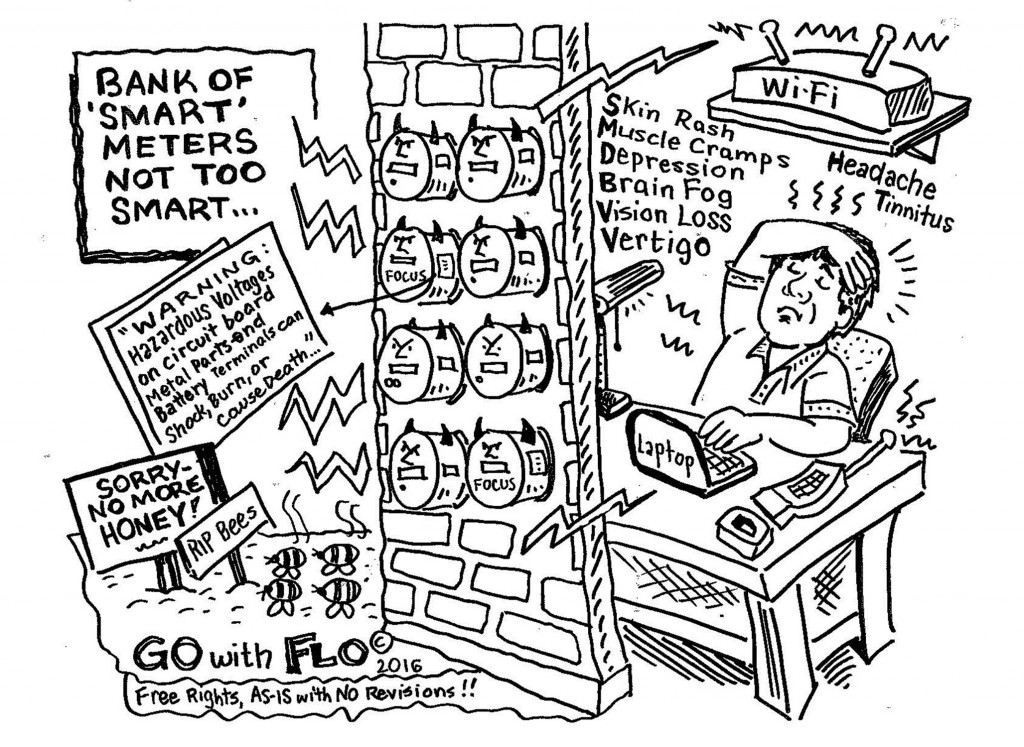Warren Woodward: Everyone knows that wireless “smart” meters communicate via microwaves. What was unknown until now is that additional frequencies are transmitted in the 2 to 50 kilohertz range. Numerous studies have shown repeatedly that those very same frequencies disrupt the human nervous system. Indeed, “nerve block” is the phrase used in the studies to describe what occurs.
The studies are not controversial. In others words, there are no studies that show otherwise. Nerve block induced by frequencies in the 2 to 50 kilohertz range is an established fact. The studies that show this nerve block are all from reputable sources including the epitome of “establishment” science when it comes to electricity, the Institute of Electrical and Electronics Engineers.
So the demonstration you will see in the video is groundbreaking, or more accurately, “smart” meter breaking.
Unless they cease, desist, and bring down the wireless “smart” grid at once, “smart” meter manufacturers and the utilities that use them are going to be facing massive liability and personal injury lawsuits because, unlike the microwave radiation that anti-“smart” meter advocates have been calling attention to for years, there is no scientific dispute regarding the biological effects of 2 to 50 kilohertz frequencies.
Additionally, state utility regulators and public health departments will need to actually do their jobs which always used to include protecting the public and promoting public health and safety.
Lastly, the U.S. Department of Energy will have to bring an immediate halt to the promotion and subsidization of the wireless “smart” grid.
Every day of delay will bring greater liability for the aforementioned corporations and agencies and the individuals involved. It’s one thing to act in ignorance, quite another not to act once knowledge is received.
To everyone reading, send this video to your utilities, your state utility regulators, your state health departments, and to hungry lawyers everywhere. Links to studies https://www.youtube.com/watch?v=4NTSejgsjTc

 We are in an era of unprecedented psychological manipulation of the science on potential health effects of EMF and RFR.
We are in an era of unprecedented psychological manipulation of the science on potential health effects of EMF and RFR.